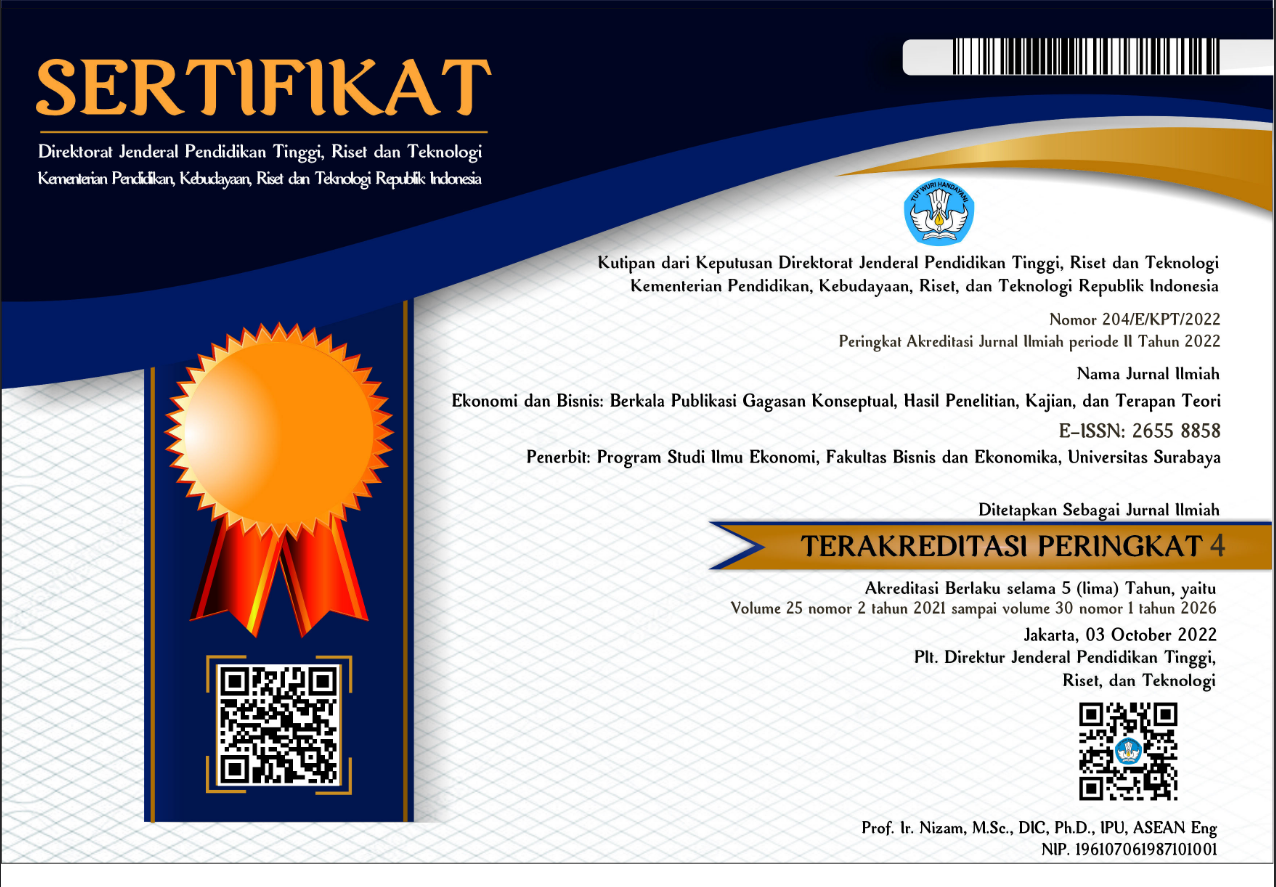THE INFLUENCE OF VTUBER VIEWERS' SELF-CONGRUITY AND CELEBRITY ATTACHMENTS ON CONSUMER ENGAGEMENT ON YOUTUBE
 Abstract Views:
1021 times
Abstract Views:
1021 times
 PDF (Bahasa Indonesia) Downloads:
840 times
PDF (Bahasa Indonesia) Downloads:
840 times
Abstract
Social media engagement is important in building brand equity as a determinant of brand reputation that can be driven through self-congruity and celebrity attachment. However, there has been no research examining the relationship between self-congruity and celebrity attachment and their influence on consumer engagement in the context of VTuber personal brands as a new phenomenon that is popular internationally. This study uses a mixed-methods approach by conducting qualitative research with qualitative text analysis techniques to determine the expressions of self-congruity and celebrity attachment that emerge through viewer comments on YouTube and questionnaires. Quantitative research is conducted using PLS-SEM analysis of questionnaire responses to determine the influence of self-congruity and celebrity attachment on consumer engagement among VTuber viewers in Indonesia on YouTube content. Qualitative research found various forms of self-congruity dominated by cultural similarities between VTubers and viewers rather than personal character similarities between them. Quantitative research confirms this by finding that only social self-congruity has a positive influence on consumer engagement. Additionally, qualitative research found various forms of celebrity attachment from VTuber viewers that confirm celebrity attachment as part of brand equity. Quantitative research also found that celebrity attachment has a positive influence on consumer engagement.
Downloads
References
Aaker, D.A. (2014). Aaker on branding: 20 principles that drives success, Morgan James Publishing.
Ayo Semarang. (2022). Profil Kobo Kanaeru, VTuber Indonesia yang lagi populer. https://www.ayosemarang.com/umum/pr-773532738/profil-kobo-kanaeru-vtuber-indonesia-yang-lagi-populer?page=3 [Diakses: 9 September 2022].
Azuma, H. (2009). Otaku: Japan’s database animals. University of Minnesota Press.
Black, D. (2012). The Virtual Idol: Producing and Consuming Digital Femininity. In P.W. Galbraith & J.G. Karlin (Eds.), Idols and celebrity in Japanese media culture (pp. 209-228), Palgrave Macmillan.
Byron, J. (2022). New collaboration in a virtual world: studying VTubers through identity, gender, and fan engagement (Unpublished Thesis). Macquarie University, New South Wales, Australia.
Cresswell, J.W. (2014). Research design: qualitative, quantitative, and mixed methods approaches (fourth edition). Sage Publications, Inc.
Forbes Japan. (2021). 世界中にファン5000万人。VTuber「ホロライブ」が急成長する理由. https://forbesjapan.com/articles/detail/44507 [Diakses: 7 Juni 2023].
Google Trends. (2022). Kobo Kanaeru – Google Trends. https://trends.google.com/trends/explore?q=Kobo%20Kanaeru [Diakses: 9 September 2022].
Hololive. (2022). Kobo Kanaeru has achieved 1 million YouTube subscribers. https://hololive.hololivepro.com/en/news/20220711-01-5/ [Diakses: 9 September 2022].
Jackson, N.J. (2020). Understanding memetic media and collective identity through streamer persona on Twitch.tv. Persona Studies, 6(2), 69-87. https://doi.org/10.21153/psj2020vol6no2art966
Lu, Z., Shen, C., Shen, H., & Wigdor, H. (2021). More kawaii than a real-person live streamer: understanding how the otaku community engages with and perceives Virtual YouTubers. Proceedings of the 2021 CHI Conference of Human Factors in Computing Systems (CHI ’21) (pp. 1-14). Association for Computing Machinery. https://doi.org/10.1145/3411764.3445660
Özer, M., Özer, A., Ekinci, Y., & Koçak, A. (2022). Does celebrity attaachment influence brand attachment and brand loyalty in celebrity endorsement? A mixed methods study. Psychology & Marketing, 39(12), 2384-2400. https://doi.org/10.1002/mar.21742
Playboard. (2022). Most popular VTuber Channels in Worldwide Monthly Period. https://playboard.co/en/youtube-ranking/most-popular-v-tuber-channels-in-worldwide-monthly?period=1656633600 [Diakses: 9 September 2022].
Social Blade. (2022). Kobo Kanaeru Ch. hololive-ID’s YouTube stats (summary profile). https://socialblade.com/youtube/channel/UCjLEmnpCNeisMxy134KPwWw [Diakses: 9 September 2022].
Rabbanee, F.K., Roy, R., & Spence, M.T. (2020). Factors affecting consumer engagement on online social networks: self-congruity, brand attachment, and self-extension tendency . European Journal of Marketing, 54(6), 1407-1431. https://doi.org/10.1108/EJM-03-2018-0221
Sirgy, M.J., Lee, D., & Yu, G.B. (2017). Revisiting self-congruity theory in consumer behaviour: making sense of the research so far. In C.V. Jansson-Boyd & M.J. Zawisza (Eds.), Routledge Internasional Handbook of Consumer Psychology (pp. 185-201). Routledge.
Swani, K., & Labrecque, L.I. (2020). Like, Comment, or Share? Self-presentation vs. Brand relationships as drivers of social media engagement choices. Marketing Letters, 31(6), 279-298.
Waller, T. (2020). Personal Brand Management: Marketing Human Value. Springer Nature Switzerland.
Zhou, X. (2020). Virtual Youtuber Kizuna AI: Co-Creating Human-Non-Human Interaction and Celebrity-Audience relationship (Unpublished Thesis). Lund University, Lund, Sweden.

This work is licensed under a Creative Commons Attribution-ShareAlike 4.0 International License.

 DOI:
DOI:















